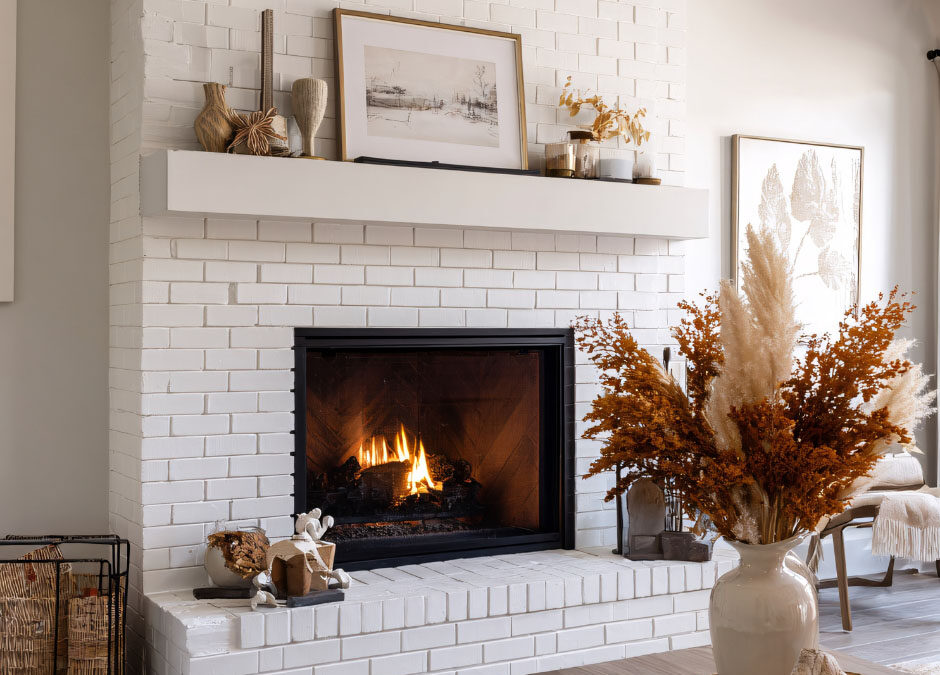There’s something timeless about gathering around a fireplace: the flicker of flames, the warmth, the coziness. But as more people get ready to light up their fireplaces this season, it’s important to understand how having a fireplace or chimney impacts your home insurance. Neglecting the details could mean trouble when you least expect it. Here’s what homeowners need to know to stay safe—and insured.
How Fireplaces & Chimneys Affect Your Insurance
Risk & Premiums
- Type of Fireplace Matters
The kind of fireplace you have—wood-burning, gas, or electric—can make a big difference. Wood-burning fireplaces generally carry more risk because of embers, creosote buildup, and increased chance of chimney fires. That often translates into higher insurance premiums. Gas or electrical models are generally seen as lower risk. - Maintenance History Counts
Insurance companies tend to look more favorably on homes where fireplaces and chimneys are regularly maintained: clean chimneys, intact chimney liners, safe hearths, and proper installation. If your chimney is neglected—cracks in masonry, flue liners in poor condition, buildup of soot or creosote—insurers may see the risk as too high or may deny claims related to deterioration. - Inspection & Documentation
Having proof of inspection and cleaning helps. If a fire starts in your chimney or smoke damage occurs, your insurer may request documentation of regular maintenance, chimney sweeps, or that repairs are done in a timely manner. That can be the difference between a denied claim and one that’s covered.
What’s Usually Covered — & What’s Not
Insurance policies vary, but some patterns are common. Understanding these can help you avoid surprises.
| Situation | Typical Insurance Position |
| Sudden, unexpected damage (say, a chimney fire, storm damage, lightning strike) | Often covered—if you’ve maintained the fireplace and chimney reasonably well. |
| Smoke or fire damage spreading into home | If caused by a covered peril (e.g. accidental fire), you are likely covered for damage to other parts of the home. |
| Water damage from flashing, leaks due to storm impact | Often covered, especially if it happened suddenly and because of external damage. But if the leak is due to long-term neglect or failure to maintain seals/flashing, it may not be. |
| Wear & tear, deterioration, neglect | Generally, not covered. Expect insurers to deny claims where damage could reasonably have been prevented through upkeep. |
Key Features & Add-Ons to Look For
When reviewing homeowner insurance policies (or shopping for one), make sure these areas are clear or negotiable:
- Chimney Liner Condition & Material
The liner protects the masonry and directs combustion products safely out of the home. If the liner is damaged or missing, that can lead to smoke or fire damage inside the chimney walls or even the house. Some insurers require specific materials, or proof that flue liners meet safety codes. - Fireplace Screen, Chimney Cap, Crown, Flashing
These small components do a lot to prevent sparks, keep rain/water out, stop animals from nesting, and protect against structural damage. Proper caps and crowns reduce water infiltration. Flashing (seal between chimney and roof) is critical. If these fail, water and weather damage can escalate. - Chimney & Fire Inspection/Sweeping
Regular cleaning to remove creosote and inspection to catch cracks or deterioration is often seen as essential. Some insurers may require annual or semi-annual inspections for wood-burning setups. Keeping records helps. - Type of Fuel Used
Burning clean, dry, properly seasoned wood, or using gas or electric reduces risk. Also, what you burn matters—paper, treated wood, or foreign materials (garbage, cardboard, etc.) can produce soot, creosote, and an increased risk of chimney flare-ups. - Smoke Detectors, Carbon Monoxide (CO) Detectors & Other Safety Devices
Having smoke alarms, CO detectors, fire extinguishers nearby, and following safe burning practices (never leave fire unattended, don’t overload fireplace, use proper tools/screens) all matter. They both reduce risk and help with insurance claims. - Policy Limits, Deductibles & Endorsements
Make sure your policy limits are sufficient to cover the cost of potential chimney/fireplace-related damage. Check deductibles. Ask if there are optional endorsements or riders specific to fireplace or chimney damage, or if there are exclusions.
Practical Steps Before You Light That First Wood Fire
- Schedule a chimney sweep & inspection now, before heavy usage. Clean out soot, check flue, check liner, fix any cracks or loose bricks.
- Replace or repair chimney caps and flashing where needed. Seal where required.
- Clear the hearth of combustible materials; use a screen to prevent embers from popping out.
- Make sure you have working smoke detectors & CO alarms near but not too close to the fireplace.
- Keep a log or receipts of maintenance: sweeps, repairs, inspections. Store safely—if you ever need to file a claim, you’ll want evidence.
Why It Matters
A chimney fire or damage doesn’t just cause property loss—it can put safety at risk, create smoke damage throughout the home, cause costly structural problems, and in some cases lead to temporary uninhabitability. Insurance is there to help, but only when the damage is covered under your policy and you’ve done your part to maintain reasonable safety.
Before the firewood comes in and the nights get chilly, take a few moments to make sure your fireplace, chimney, and insurance are aligned. Want a review of your homeowner policy? Contact us for a no-obligation check to make sure you’re protected when you crank up the heat.Top of Form

